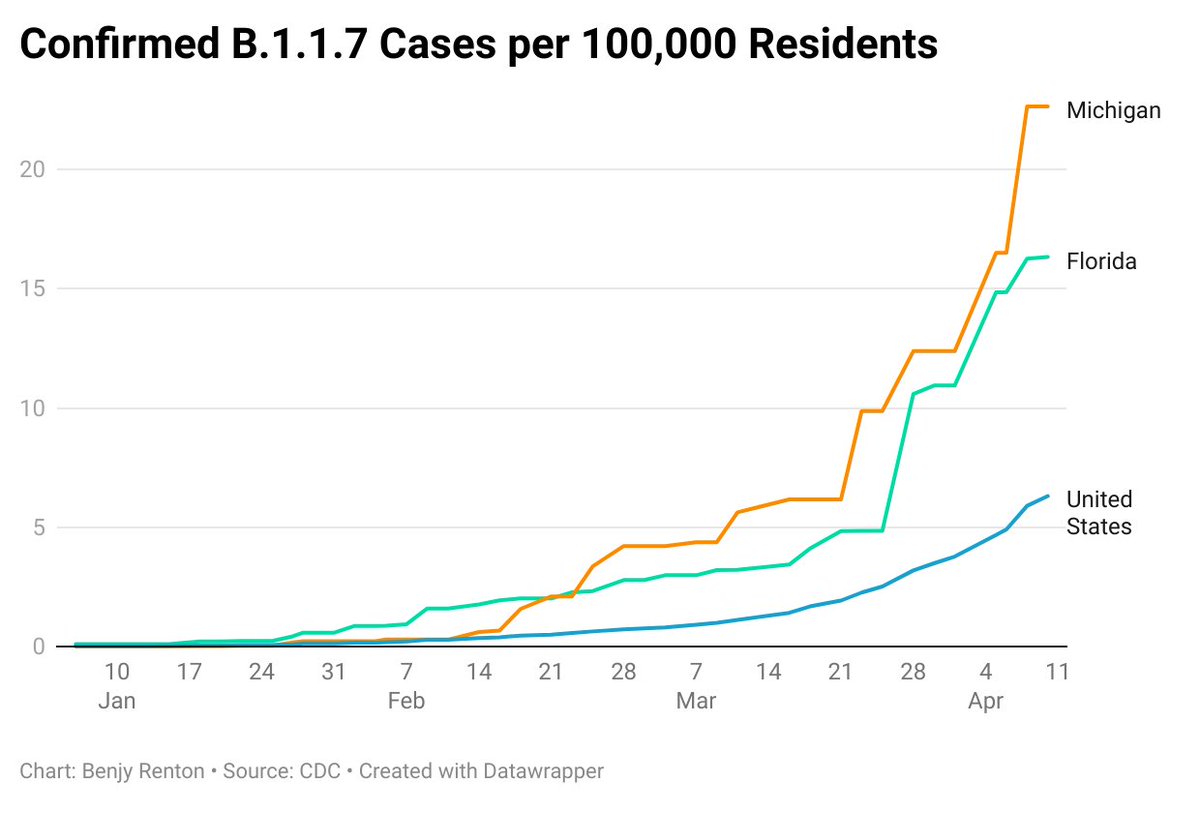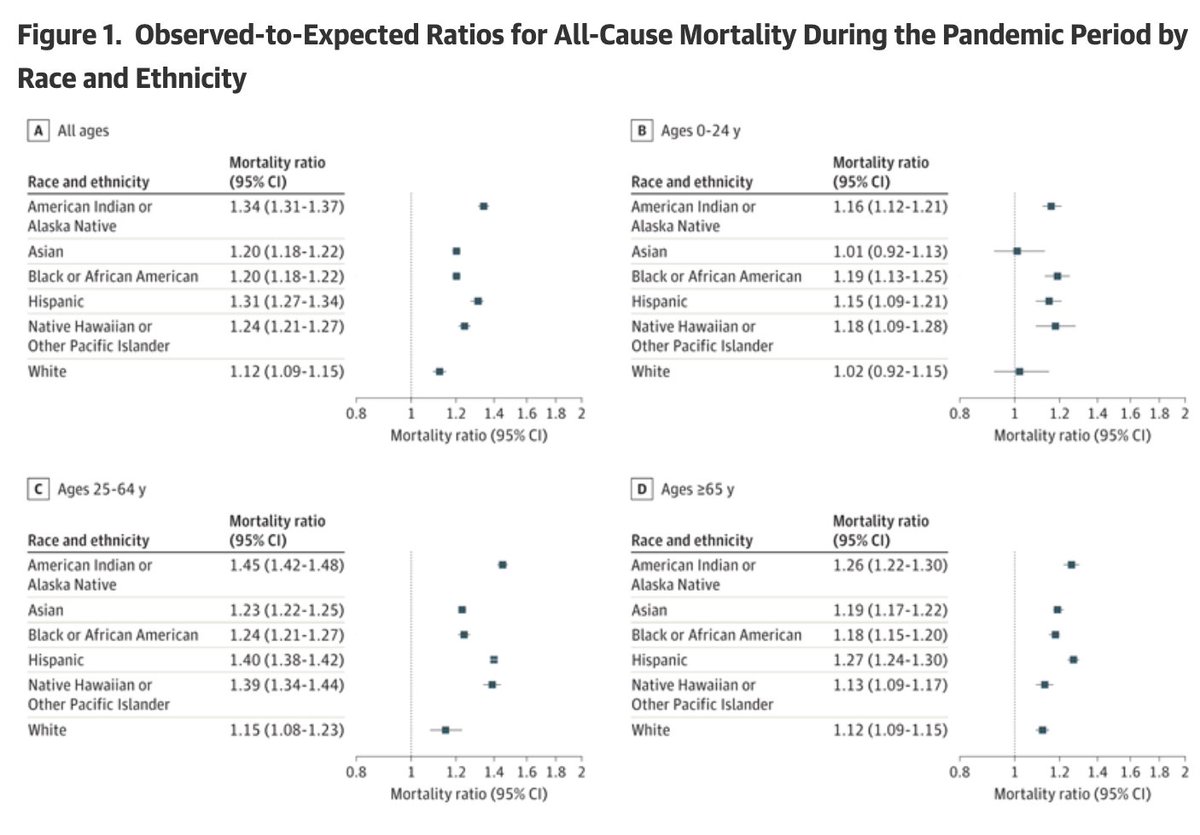A few weeks ago, we examined Florida's rising cases, especially among young people in a largely unvaccinated population. Quick thread on most recent trends:
https://twitter.com/bhrenton/status/1376565616061124613
1. Cases continue to grow in almost all of the age groups. Particularly concerning spikes are in 5-14 year olds (orange), 15-24 (yellow) and 25-34 (green). 55-64 cases are also quite high, which could be a result of slow vaccination in those age bands. 
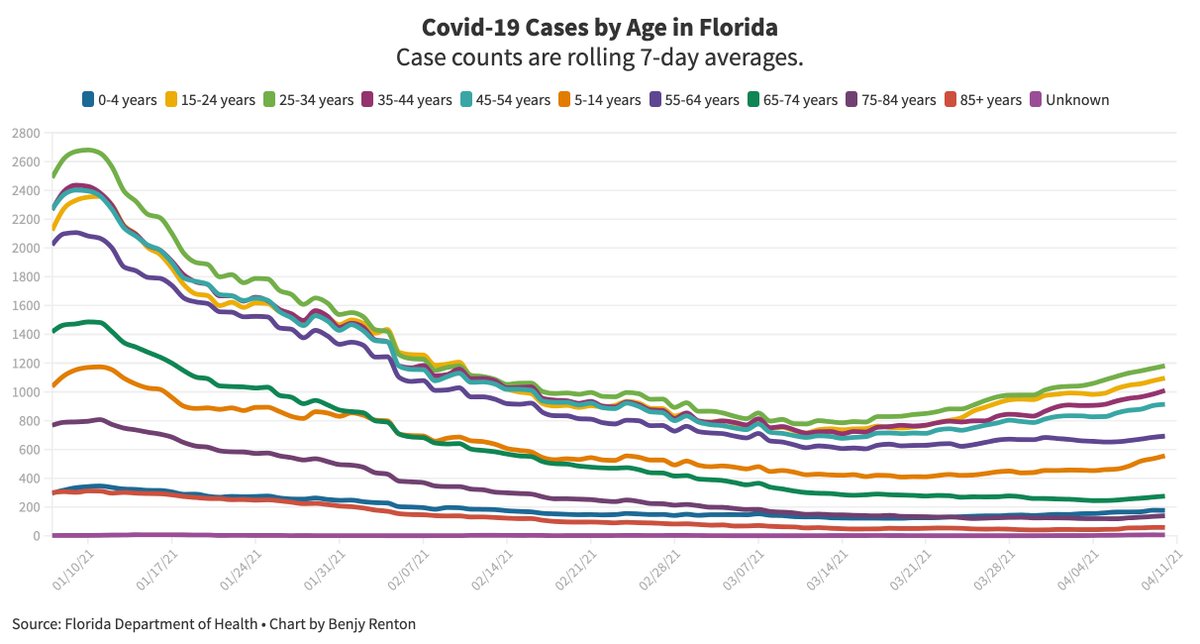
2. Cases in those 75+ now represent a small portion of total cases. 79.9% of Florida's seniors (65+) have received at least once dose. 
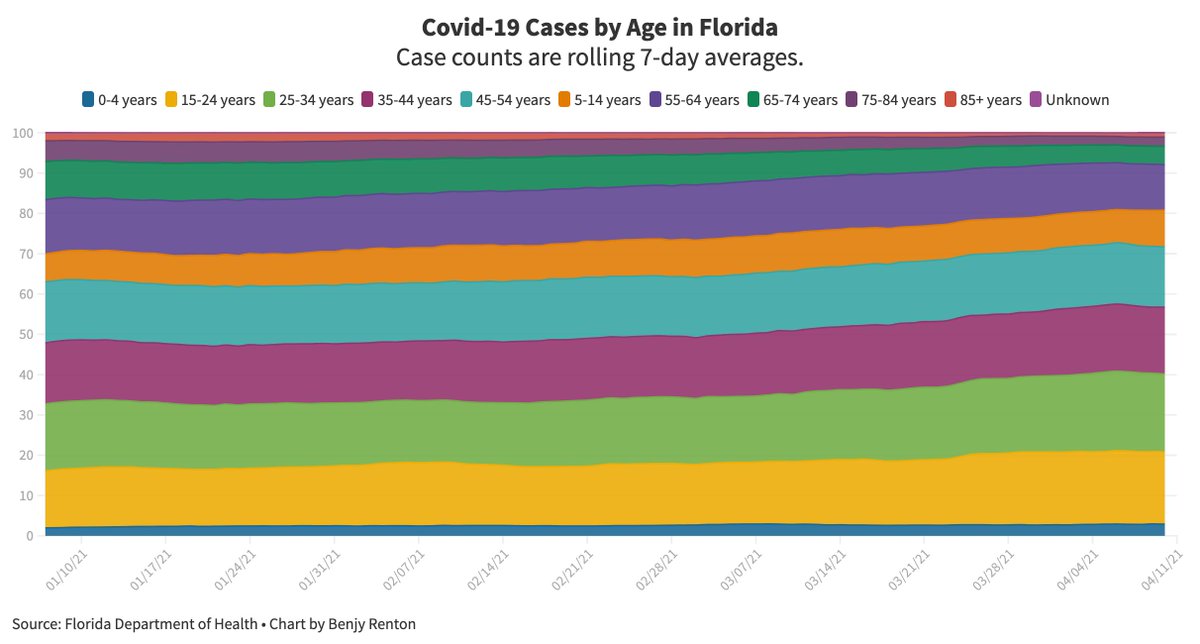
3. Compared with 2 weeks ago, cases have continued to increase in all age groups, some more than others. 
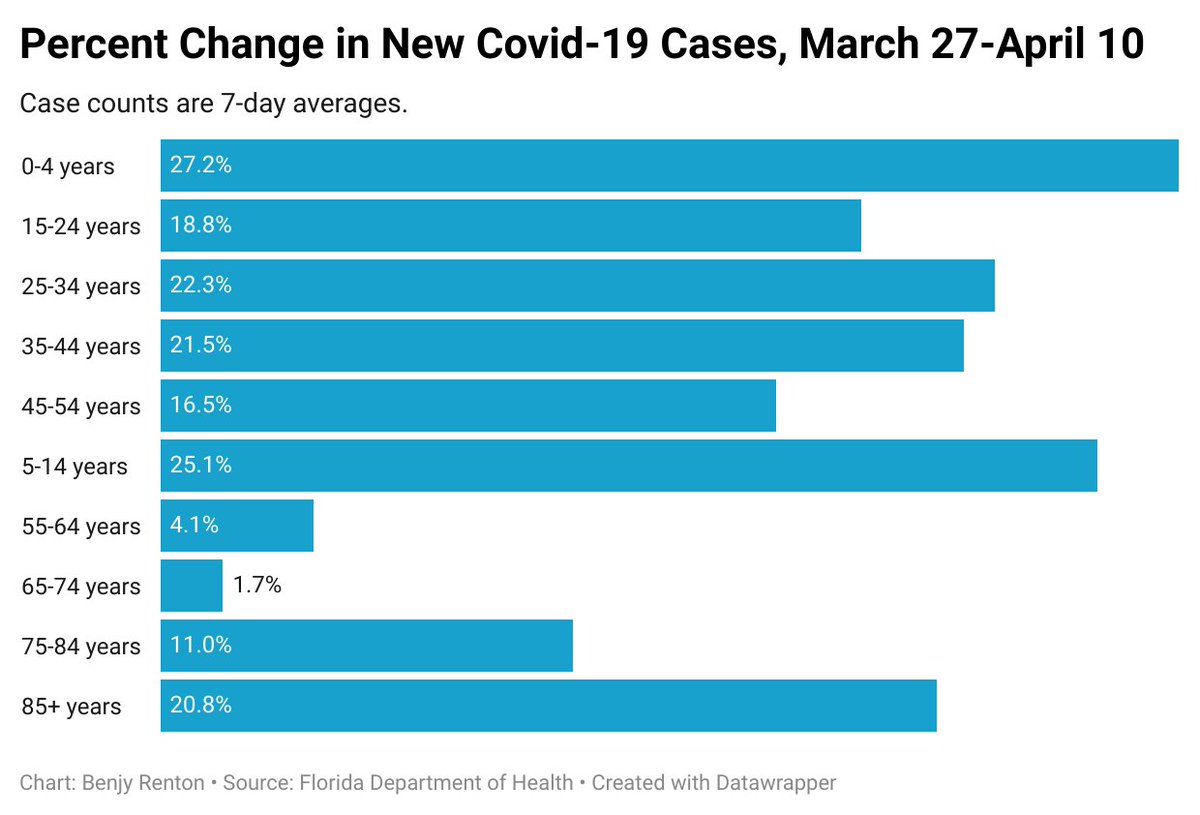
4. Where is case growth among the 15-24 year olds most present? Cases are rising among this age band on both coasts. 
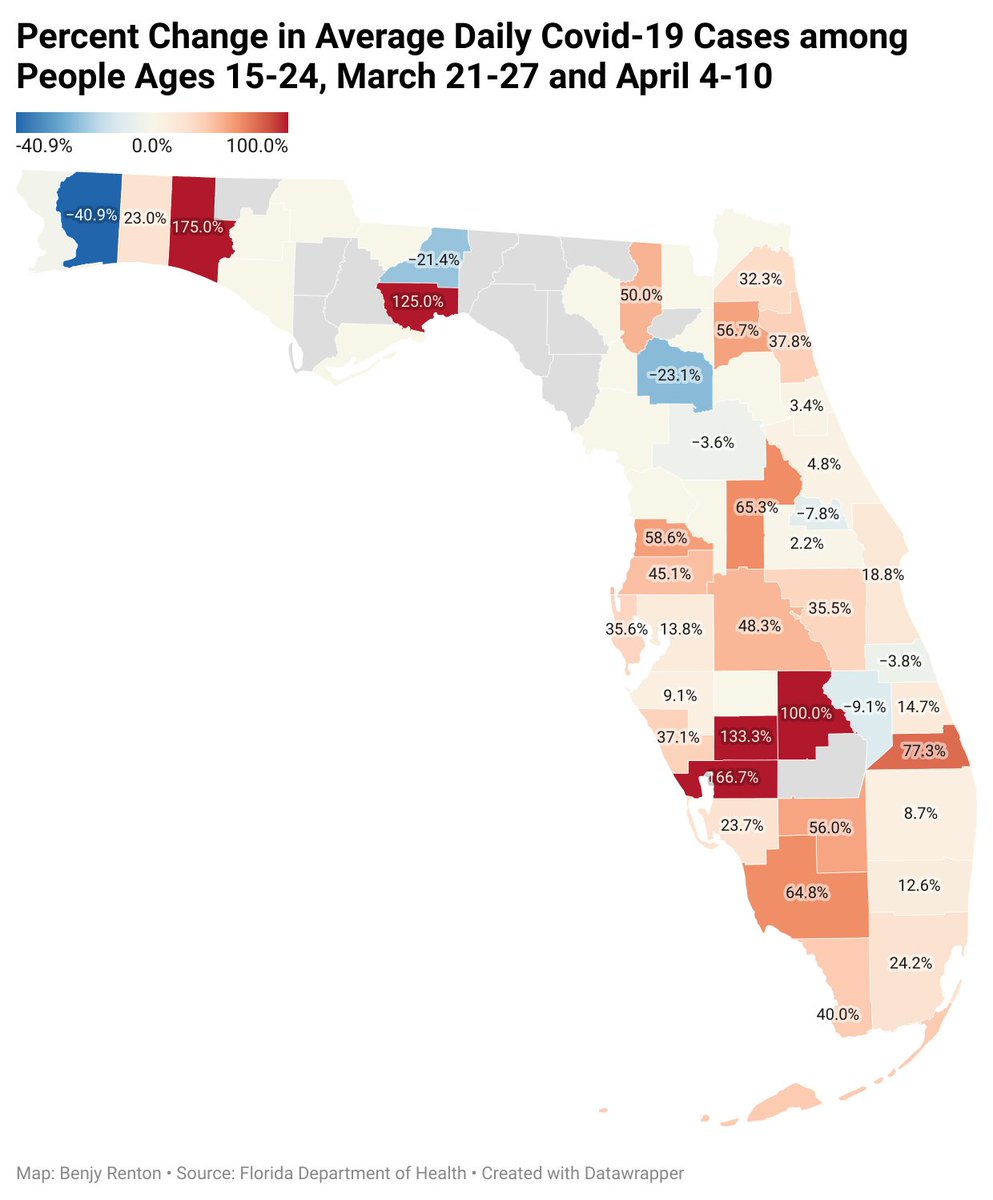
6. When it comes to vaccinations, Florida ranks:
- 33th in doses administered per capita
- 35th in the percentage of the population with at least 1 dose
- 36th in the percentage of the population fully vaccinated
- 20th in 65+ with at least 1 dose (most vulnerable)
- 33th in doses administered per capita
- 35th in the percentage of the population with at least 1 dose
- 36th in the percentage of the population fully vaccinated
- 20th in 65+ with at least 1 dose (most vulnerable)
Floridians need to continue to practice public health measures for a few more weeks while vaccines are rolled out. We also need to take steps to increase demand among the younger population. There are around 4.5 million doses delivered to Florida that have not been put in arms. 
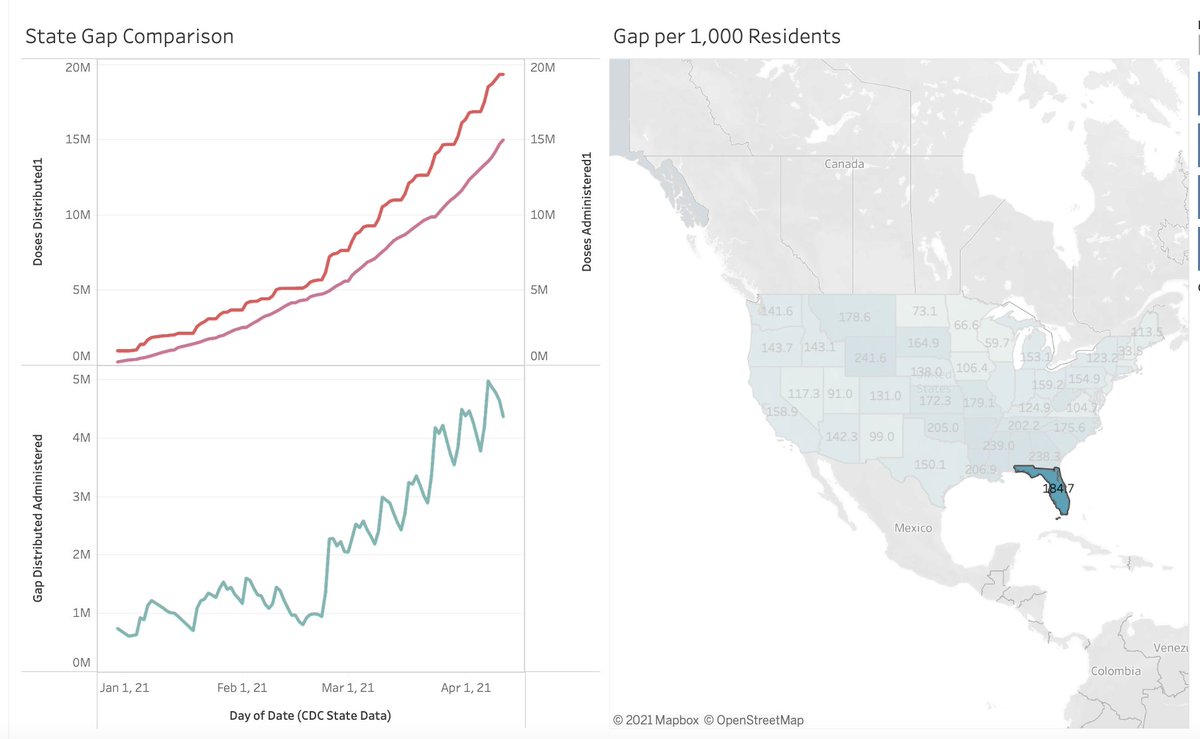
• • •
Missing some Tweet in this thread? You can try to
force a refresh

